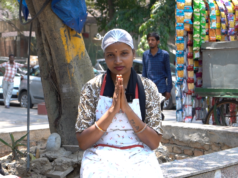The Covid pandemic will change the world permanently in many ways. Most obviously, people will increasingly work from home. Workplaces will not disappear, but an increasing share of work will be done at home.
This will save employers office space and ancillary facilities. It will save employees money, time, and hassle in commuting to work. It will slash the need for meetings of every sort. More people will be available for part-time work or piecework from home, boosting productivity.
In India, working from home could finally reverse the dramatic crash in the female labour-force participation rate (FLPR). In rich countries, two-thirds of women above the age of 15 work, increasing incomes and living standards. In every Asian miracle economy, a rising FLPR enabled GDP growth to exceed 7%.
The one exception is India, where the FLPR has fallen from 33% in the early 1990s to just 25% according to government data, and to as little as 11-12% according to surveys of the Centre for Monitoring the Indian Economy. The CMIE figure looks too bad to be true. Maybe Covid has made it even more unsafe for women to leave home to work.
The FLPR crash means India’s overall labour participation rate, for men and women, has been falling. This is the very opposite of the increase that a demographic dividend was supposed to give India. The total participation rate was around 50% a decade ago, but fell to 43% in 2019-20, fell further with Covid, and has revived slightly to a still pathetic 41%. Male participation has been more or less constant, but female participation has crashed, lowering the national average.
Why so? One encouraging reason is that a greater proportion of girls in the 15-25 age group are now in school and college instead of the fields. The same is true of boys of 15-25 years. This is good for the long run, though the quality of education must be upgraded.
But female participation has also fallen in every other age group from 25 to 65, above all in agriculture. In urban areas, the FLPR has always been among the lowest in the world at around 16%. It has shrunk a bit despite rising female education. The boom in college-going girls has not translated into a boom in urban jobs for females.
Deep social reasons explain this. A global map displaying female participation will show that by far the lowest rates lie in a mostly Muslim belt stretching from Morocco across north Africa and the Middle East to north India. The Islamic culture that discourages female education, employment and outside work has affected north Indian Hindu culture too. I have seen microfinance groups in UP where every woman covered her face with her pallu, very unlike the open faces you see in Kerala or Tamil Nadu.
In north India, women are considered fair prey for men if they roam outside their houses, especially at late hours. They are not supposed to complain of molestation for fear of “badnami”, a slur on their reputation. In rural India, women (especially Dalits) transplant rice and harvest crops in groups and feel reasonably safe. But farm mechanisation has slashed such work.
Once, poor families perforce sent women to work to earn cash. But now with falling poverty, rising wages and remittances from urban relatives, many rural families keep their young women at home as a status symbol. Chandra Bhan Prasad, a Dalit scholar, says that families whose girls work in the fields get only low-quality sons-in-law, so keeping women at home improves both status and marriage-related prosperity. Thus, the social roots of low female participation run very deep and cannot easily be removed.
What might just change this culture is the ability to work from home. Zoom, Google groups and other tele-conferencing facilities now mean that women can work from home on par with men, with no social stigma or lack of safety. They do not have to leave home and face molestation or “badnami.” Zoom slashes commuting time and can make it feasible for women to do both office and family chores. Besides, working from home can provide enough income to hire servants.
Obsolete laws had earlier made it difficult for IT firms to get the telecom clearances needed for creating efficient network working from home. Luckily, those rules were suspended because of Covid and should be abolished permanently. Women now outnumber men in colleges, and this needs reflection in urban hiring. The government should consider subsidising companies hiring women to work from home, since this increases the demographic dividend and helps society overall. We must change the terrible culture that keeps women at home, out of the workforce.
This article was originally published in the Times of India on January 11, 2021.
Read more: The answer to India’s food security woes
Post Disclaimer
The opinions expressed in this essay are those of the authors. They do not purport to reflect the opinions or views of CCS.






